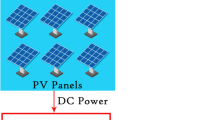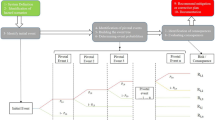Abstract
With the growing demand of electricity worldwide, most of the power generation companies focus on long-term and cost-effective asset operation and maintenance strategies to reduce their unplanned downtime which is their main cost driver. Power generating companies are trying to make their commercial process smart and agile enough to do proactive equipment assessment and failure identification in advance rather than taking corrective actions after an event. A turbine failure occurs when a turbine unexpectedly stops producing power due to malfunctioning or break-down of the key components. This creates a complete shutdown of the power generation process and disruption in power generation. To keep these operational, it is extremely important to have a robust asset reliability and failure prediction models which can pro-actively help these companies to manage their operation and maintenance costs optimally. In this paper, we have studied the failure pattern of turbines after fitting most commonly used single distribution (such as Weibull, gamma and log-normal) and also composite and mixed distributions by the help of machine learning tools to forecast asset failure patterns more accurately. The paper finally compares between single distribution model fitting with composite and mixed distribution model fitting. The numerical illustration is based on historical failure data of 2470 turbines. More importantly, if more than one suitable model exists, the same can be mathematically combined to get a joint forecast model to forecast failure pattern which is found better than single distribution applied separately. Finally, these predictive methods could be applied to a power generating company for the failure forecast of its assets and to identify upcoming commercial action in advance.






Similar content being viewed by others
References
AL-Hussaini KE, Abd-El-Hakim NS (1989) Failure rate of the inverse Gaussian-Weibull model. Ann Inst Stat Math 41(3):617–622. https://doi.org/10.1007/BF00050672
AL-Hussaini KE, Abd-El-Hakim NS (1990) Estimation of parameters of the inverse Gaussian-Weibull. Commun Stat Theory Methods 19(5):1607–1622. https://doi.org/10.1080/03610929008830280
AL-Hussaini KE, Abd-El-Hakim NS (1992) Efficiency of schemes of sampling from the inverse Gaussian-Wei-bull mixture model. Commun Stat Theory Methods 21(11):3143–3169. https://doi.org/10.1080/03610929208830967
Awad M, Khanna R (2015) Efficient learning machines. ApressOpen. pp 39–66. https://doi.org/10.1007/978-1-4302-5990-9_4
Billinton R, Allan RN (1996) Reliability evaluation of power systems. Plenum, New York
Chakravarti IM, Laha RG, Roy J (1967) Handbook of methods of applied statistics. Volume I: techniques of computation descriptive methods, and statistical inference. Volume II: planning of surveys and experiments. John Wiley, NY
Çınar ZM, AbdussalamNuhu A, Zeeshan Q, Korhan O, Asmael M, Safaei B (2020) Machine learning in predictive maintenance towards sustainable smart manufacturing in industry 4.0. Sustainability 12(19):8211. https://doi.org/10.3390/su12198211
Dagpunar J (2019) The gamma distribution. Significancemagazin.com; February
Dong M, Nassif AB (2018) Combining modified Weibull distribution models for power system reliability forecast. IEEE, Canada
Elandt-Johnson RC, Johnson NL (1980) Survival models and data analysis. Wiley, New York
Jordan AS (2003) A comprehensive review of the lognormal failure distribution with application to LED reliability. Microelectron Reliab. https://doi.org/10.1016/0026-2714(78)90331-1
Kao J (1959) A graphical estimation of mixed Weibull parameters in life-testing of electron tubes. Technometrics 1:389–407. https://doi.org/10.1080/00401706.1959.10489870
Li W (2002) Incorporating aging failures in power system reliability evaluation. IEEE Trans Power Syst 17(3):918–923
Majeske KD, Herrin GD (1995) Assessing mixture model goodness of fit with an application to automobile warrant data. In: Proceedings of annual reliability and maintainability symposium, pp 378–383
Mannan S (2012) Lees' loss prevention in the process industries. In: Science direct, 4th edn, vol 1, pp 131–203. https://doi.org/10.1016/C2009-0-24104-3
Ray S (2017) Understanding support vector machine (SVM) algorithm from examples (along with code). Analytics Vidhya. https://www.analyticsvidhya.com/blog/2017/09/understaing-support-vector-machine-example-code/
Rinne H (2008) The Weibull distribution: a handbook. CRC Press
Zhong S, Li Z, Lin L (2017) Probability evaluation method of gas turbine work-scope based on survival analysis. In: Prognostics and system health management conference (PHM-Harbin), Harbin, pp 1–6
Funding
The authors received no financial support for the research, authorship, and/or for the publication of this article.
Author information
Authors and Affiliations
Contributions
BRconceived the idea and developed quantitative design to undertake the empirical study. DB generated concepts relevant to the research design and extracted relevant research papers from online database. SN conducted proofreading of the paper and further helped to modify the sections. Prof. SKU verified the analytical methods and supervised the overall paper. The quantitative data were collected, and the numerical computations were done by BR, DB and SN jointly using R software. Finally, BR and DB wrote the manuscript in consultation with the co-authors.
Corresponding author
Ethics declarations
Conflict of interest
The authors certify that they have no affiliations with or involvement in any organization or entity with any financial interest, or non-financial interest in the subject matter, or materials discussed in this manuscript.
Informed consent
This research did not involve human participants, their data or biological material.
Additional information
Publisher's Note
Springer Nature remains neutral with regard to jurisdictional claims in published maps and institutional affiliations.
Rights and permissions
About this article
Cite this article
Roy, B., Bera, D., Nigam, S. et al. A study of turbine failure pattern: a model optimization using machine learning. Int J Syst Assur Eng Manag 13, 1761–1770 (2022). https://doi.org/10.1007/s13198-021-01542-9
Received:
Revised:
Accepted:
Published:
Issue Date:
DOI: https://doi.org/10.1007/s13198-021-01542-9




